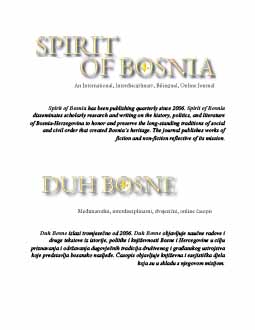The Bosniaks, the Croats and the Serbs in Bosnia-
Herzegovina: Their Experiences of Yugoslavia
The Bosniaks, the Croats and the Serbs in Bosnia-
Herzegovina: Their Experiences of Yugoslavia
Author(s): Husnija KamberovićSubject(s): Ethnohistory, Demography and human biology, Post-War period (1950 - 1989), Inter-Ethnic Relations
Published by: Wittenberg University - Sociology Department
Keywords: Bosniaks; Croats; Serbs; Bosnia-Herzegovina; Yugoslavia;
Summary/Abstract: The truth is that the percentage of Serbs in the entire population of Bosnia-Herzegovina almost crumbled at the time of socialist Yugoslavia (from 44% of the population in 1948 it fell to 31% in 1991). Despite that fact, the majority of Serbian Communists were devoted to Bosnia-Herzegovina’s affirmation as an equal federal unit of Yugoslavia throughout the socialist era. What seems most convincing is that the B-H Communist movement as a whole was not ethnically oriented since the Communists endeavored to affirm and develop all national identities and opposed the building of a supra-national identity that could have disturbed the ethnic balance – a major factor of B-H, s integrity. This was evident in the 1960s and 1970s when some circles promoted Yugoslavianism and Bosnianism as national identities. The Communists of Bosnia-Herzegovina turned down both options flat, arguing that anything like that could lead towards centralization and unitarianization of the country (Yugoslavianism) or denial of the Serbian and Croatian national identity in Bosnia-Herzegovina (Bosnianism).
Journal: Duh Bosne
- Issue Year: 12/2017
- Issue No: 4
- Page Range: 1-2
- Page Count: 2
- Language: English

